Russian hound sighthound: characteristics, temperament, basics of care
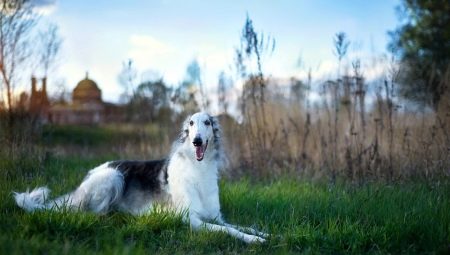
A rare breed of dogs that combines unsurpassed gracefulness of the exterior and such a high hunting passion, agility in pursuit of a wild animal. The Russian hunting greyhound is an object of inspiration for artists, sculptors and writers. Hunting with her participation was described by A. N. Tolstoy. A.S. Pushkin dedicated his delightful poetic lines to her.
Russian greyhounds were kept at court by crowned persons from England and Russia, and hunting for hounds in Russia rarely did without the participation of dogs of this unique breed. It is not for nothing that the profile of the dog adorns the emblem of the Russian Kennel Federation, symbolizing the quality of the Russian breeding style.
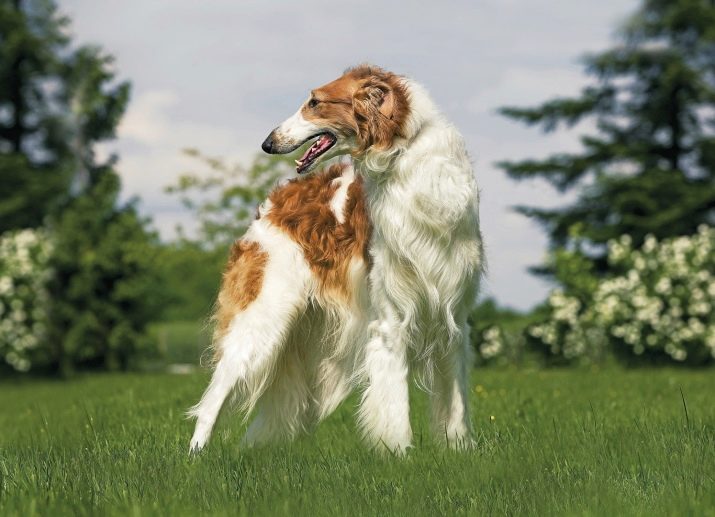
Historical facts
The history of this ancient breed goes back to Kievan Rus. According to one of several versions, this ancient breed was brought to us by the Tatar-Mongol conquerors - adherents of canine hunting fun. However, this version is contradicted by the famous fresco in the St. Sophia Cathedral in Kiev, erected in the 11th century, with the character of a dog very similar in exterior to a modern greyhound.
These fast and dexterous animals were used by Vasily III and many Russian nobles. In the 16th century, the Tatar princes, resettled by Ivan the Terrible to Kostroma and Kazan, crossed greyhounds from Asia with local hunting breeds.
The resulting breed, after adding some other bloodlines, was called “Slovenian dogs”.
Even then, in ancient times, the breed was appreciated. The historical fact is known when Boris Godunov sent several greyhounds to the Shah of Iran Abbas as a gift. By this time the breed received the best qualities not only in hunting skills, but also in the exterior, combining the nature of Asians and the appearance of Europeans.

In Russia, hound hunting with greyhounds quickly gained popularity among the nobility, and in 1888 a standard was set. In the 19th century, the overwhelming majority of estate owners considered it a rule to keep dozens of greyhounds in their yards.
This was partly due to the significant number of wolves that bred during those days.
In the future, Russian hunters continued to try to improve the breed, mixing the blood of thoroughbred domestic canines - as a result, the so-called Kurlyandka appeared. Its distinguishing features were a thinner, longer and thicker coat, with a lesser degree of bruising.
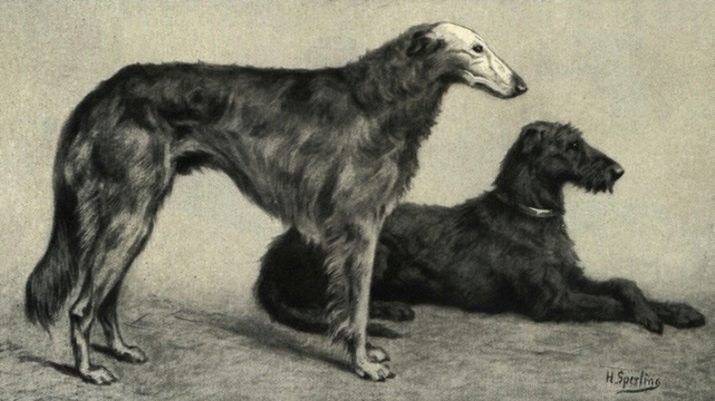
Since the beginning of the 19th century, greyhounds were rare and extremely expensive. There were several types of Kurland type dogs, but in the end the breeders managed to come to a uniform standard. Today it is a graceful, sophisticated and agile breed with a peculiar character.
Dogs of this particular breed traditionally live at the court of English crowned heads. Several greyhounds were presented to the Princess of Wales and the Duchess of Newcastle by Alexander II. Struck by the beauty of the greyhounds, the Duchess started breeding dogs in her private club Nots. Greyhounds were featured in elite commercials as characters.
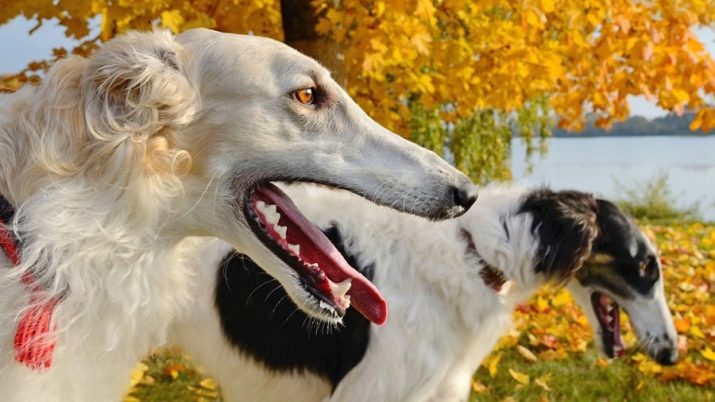
The famous Hollywood stars D. Harlow and O. Hevilland also kept these dogs.
Since the time of I. the Terrible, greyhounds, as a rule, receive traditional sonorous names, for example, Rada, Young Lady, Zlata and the like. Dogs were named greyhounds for their unusually high quality of agility, and the name "canine" comes from the term "psovina", which reflects the waviness and silkiness of the coat.

Hunting for greyhounds is only a temporary episode, at other times they are ordinary pets, with their own special, aristocratic character. The ancient instinct of the pursuer arises exclusively on the beast.
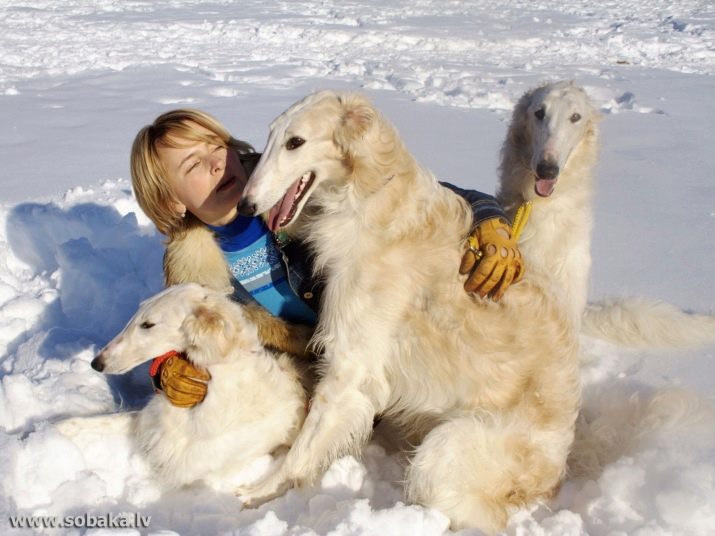
Description of the breed
The most popular greyhounds are:
- Afghan hounds;
- Russian greyhounds;
- Russian canine sighthounds;
- Moscow greyhounds.
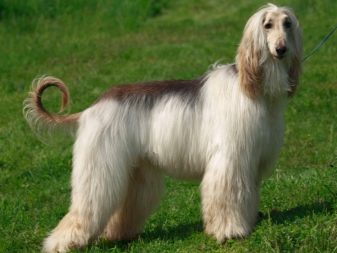
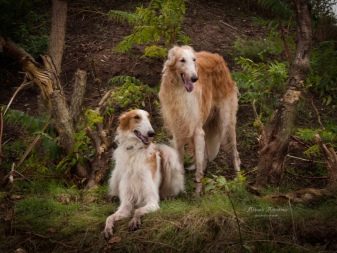
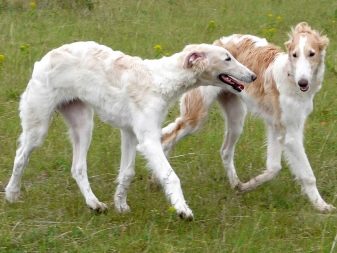
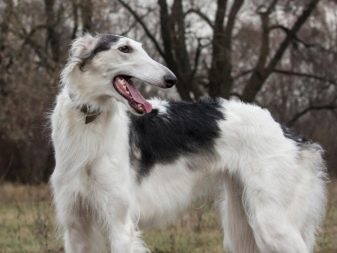
The more graceful appearance among them is, perhaps, the Russian greyhound (hound) and the Afghan hound. They are especially attractive because of their long and thick coat, which protects dogs in difficult mountain conditions and from strong Russian frosts. The old name of a dog's coat - psovina - has survived to our time and is widely used among professionals and amateurs when it comes to the Russian line.
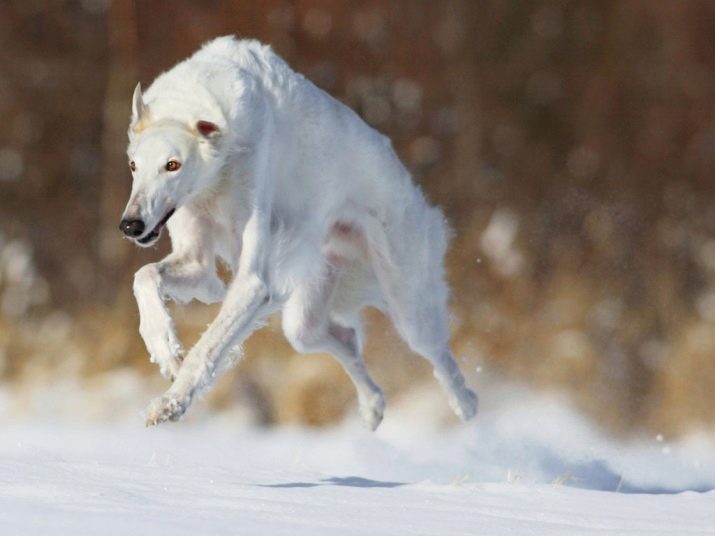
Their silky with a brilliant tint, the dog practically does not get dirty, which differs from the coat of dogs of other breeds, including smooth-haired ones.
The main feature of the Russian line is that unlike many other breeds, which have become just a decoration of the house, she has not lost her main purpose and is quite capable of driving a wolf or a hare... This is an exclusively hunting breed that has retained all the necessary qualities for enclosing a wild animal.
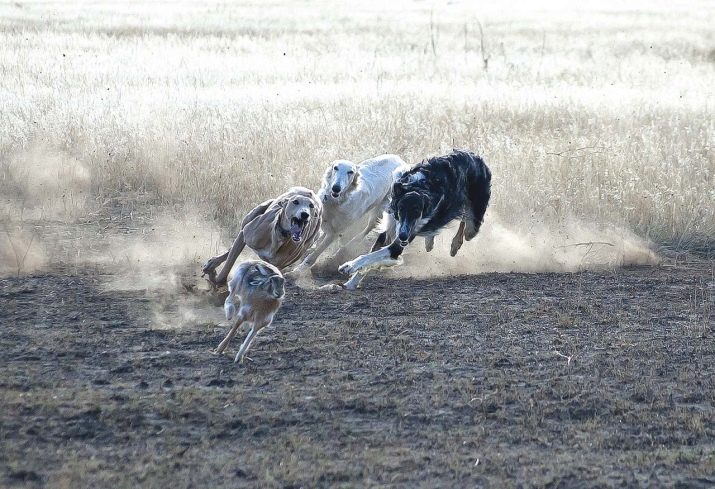
Despite this, greyhounds live quietly in apartment conditions, with constant and vigorous walking.
The appearance of a greyhound is all about refinement, grace and sophistication.... Possessing significant growth and decent weight (males at the withers reach 85 cm, females - up to 78 cm), greyhounds move with enviable ease and enviable speed: jerk - up to 100 km / h, operating mode - 60 km / h. As excellent runners, dogs are often used in race racing.

The greyhound looks so harmonious and graceful that it has become the object of inspiration for many artists, poets and writers. Particular grace and beauty, as the main characteristics of greyhounds, were most talentedly reflected in his paintings by the artist Louis Icarus. After his work, the unusually proud image of the greyhounds soon became a fashion trend. There were sculptures, prints and other works of art dedicated to the extraordinary breed.
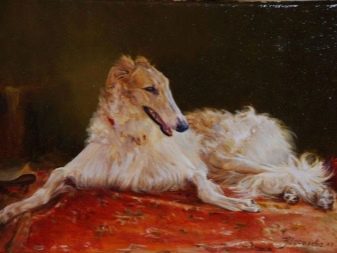
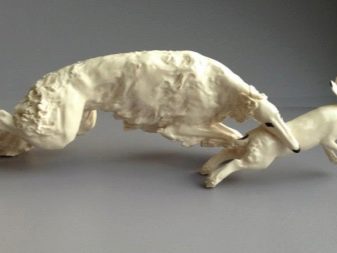
According to the FCI (standard), the description of the breed is different:
- dry, strong and somewhat elongated physique;
- large, light, elastic and sweeping leaps when moving at a trot;
- a fast career with wide leaps in pursuit of the beast;
- long, thick, silky and wavy hair, and on the head, ears and legs with a shorter and denser coat;
- thin and elastic skin;
- strong body;
- lean form and well-developed muscular system;
- dry, elongated head shape;
- a large, dark nose with prominent nostrils;
- thin, tight-fitting lips;
- small, beautiful and high-set ears, in an excited state, slightly rising forward;
- large brown, obliquely placed eyes (with a visualization radius of 270 degrees), dark, closely fitting eyelids;
- large canines with a scissor bite;
- a muscular, slightly elongated neck with a thick cover;
- an elongated, voluminous chest, elongated to the elbows (the greyhounds have the largest heart in terms of volume);
- a muscular, firm, arched back and an elongated, strong and wide loin;
- long, muscular croup;
- erect, lean and muscular forepaws;
- narrow, oval-shaped paws with elastic pads;
- long, thin, saber-shaped, low-set tail.
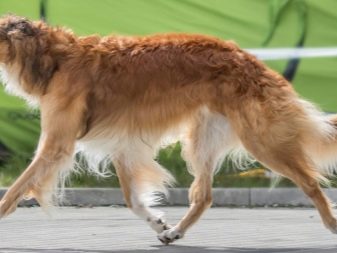
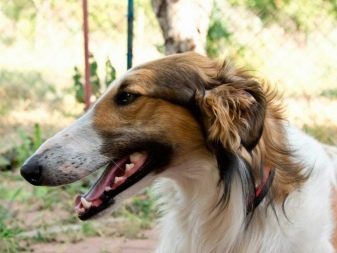

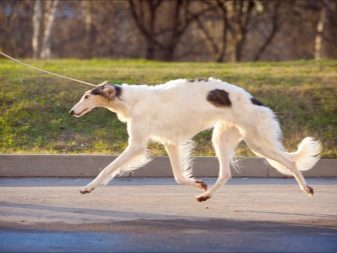
Depending on the size and length of the spots, the color of the dogs is divided into 2 types.
- Piebald, with a dominant background of dark, red, gray and other colors. Against this background, pezhins are located - light blotches, mainly on the front of the body and on the tip of the tail. Pezhina can be located from the nose to the frontal, in the form of a collar on the neck, placed in the region of the sternum, abdomen and legs.
- Spotted (light), with various blotches of dark, reddish and gray shades, located in the eyes, ears, trunk or upper part of the tail.
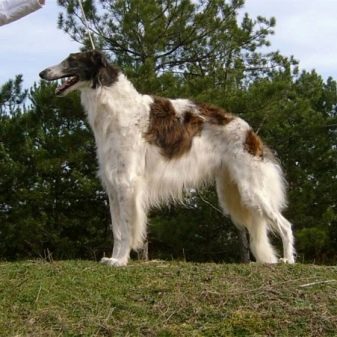

The actual color of greyhounds is diverse:
- White;
- grayish fawn with a silvery sheen;
- fawn with dark shades (burmat);
- red with a black muzzle, eartips and a black stripe on the back and body (murugiy);
- gray of various shades;
- fawn, reddish, black, grayish in the form of stripes or ovals (forelock);
- black with tan on the face, eyebrows, cheeks, sternum and paws;
- burmat of various shades from light to reddish shades, with powdered dog;
- dark burmat (fawn cover with brownish awn);
- gray-fawn (for example, gray back with fawn sides).


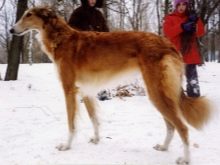
External defects of the breed can be both pronounced and weakly expressed. So, for an excessively hard coat, a greyhound will no longer be able to get the highest score, but for aggressiveness or an incorrect bite, the dog runs the risk of not getting into the competition.
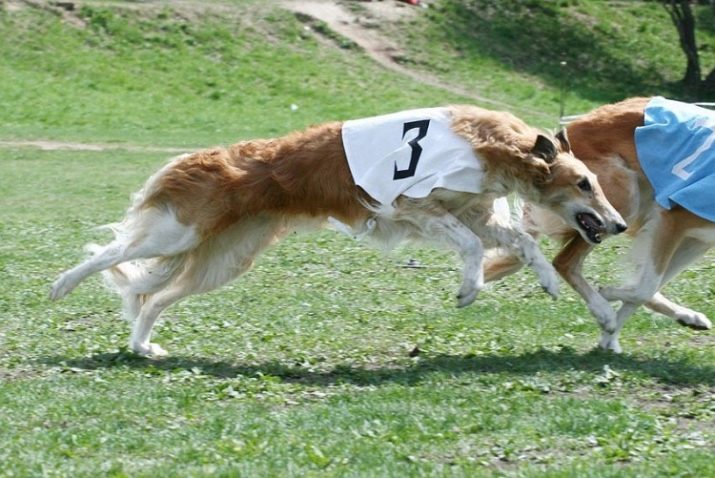
Usually, the commission rejects canine sighthounds for serious violations of the requirements of the standard. These can be: missing teeth, inconsistency with the color standard, incorrect position of the canines.
The life span of greyhounds is about 13 years. They grow up at about a year and a half, reaching a weight of 48 kg. At 2 months, the weight of the dog is about 12 kg, a two month old puppy is an exact copy of what will grow in the future.

It is noteworthy that the greyhound often participates in the races that have become extremely popular today for mechanical hares - a very spectacular and exciting sight.
Advantages and disadvantages
No matter how beautiful the breed is, there are always pros and cons. The pluses of the Russian greyhound, taking into account its hunting specialization, include:
- high speed qualities;
- endurance and excellent eyesight;
- some phlegm in everyday life, but not while hunting;
- excellent physical condition;
- aesthetics, beauty and grace.
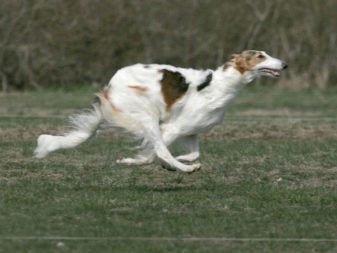
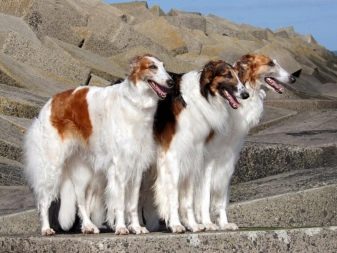
By cons:
- in an apartment, a dog requires a lot of space;
- the need for frequent and long walks;
- an innate readiness to pursue, often arising outside the hunt.

People who have a shortage of free time should not get a dog.
Character traits
In everyday life, the greyhound demonstrates stability and calmness of the psyche. However, during the hunt, this is a completely different animal - hunting instincts make themselves felt, dogs instantly become excited and are ready to chase game relentlessly for tens of kilometers.

The dog has a certain aristocracy and delicacy of behavior, she is balanced and proud so much that there is not even a suspicion of her subordination to man. Even a certain mysticism is felt in such behavior.
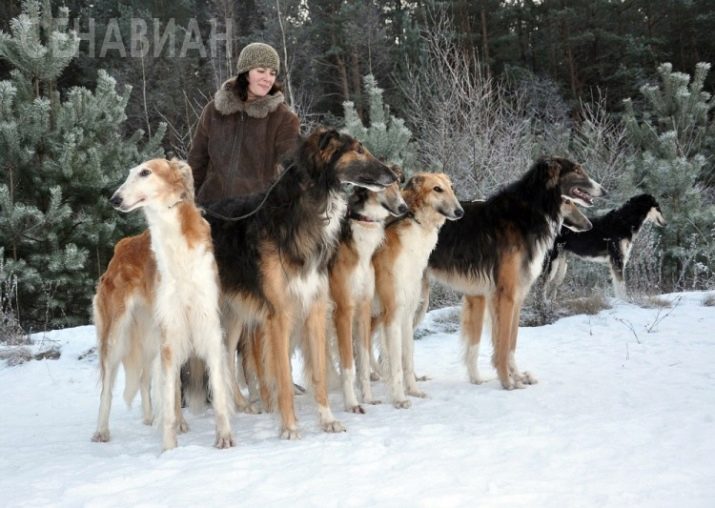
The greyhound perceives outsiders indifferently and even somewhat arrogantly. He loves the master's children, there is no aggressiveness towards people. However, on the street to outside children, external aggression can be tolerated.

The greyhound is tolerant of pets, provided that he lives with them.
Surprisingly, this large and extraordinary animal adapts well to life in an apartment. She has almost no smell of "dog", and in the period between molting (late spring), wool is not visible in the apartment. Restrained and aristocratic animal, in vain does not like to bark.
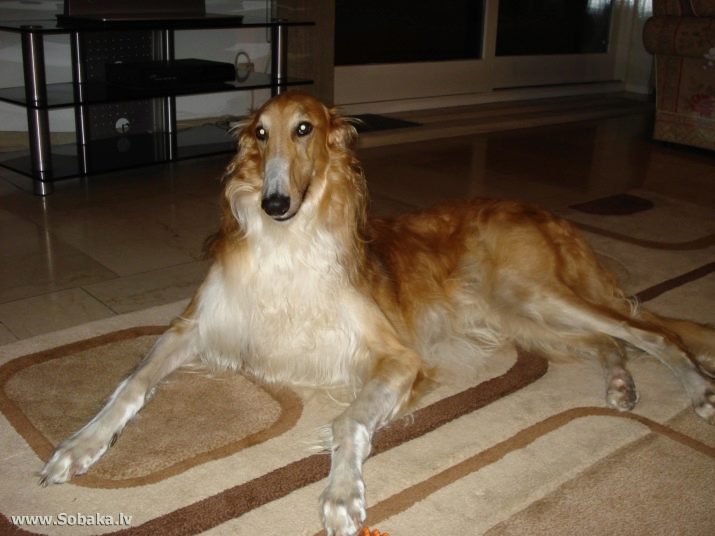
Professionals often compare pets to cats, since greyhounds like to warm up by the battery, sit comfortably in an armchair, often they are not visible or heard in the house.
This breed with a refined mental organization should not be trained, but rather patiently educated. It is important to establish a special contact with the animal, in which the pet understands the owner perfectly. Such a relationship presupposes complete trust, respect and understanding. Canine greyhound important is the presence of the owner and the feeling that she is being looked after, cared for, communicated with and played with.

In order to win the attention of the owner, she will not follow him with her tail and get bored, her character will not allow this.
A dog, subtly capturing the psychological state of the owner at the subconscious level, may well play the role of a real antidepressant, trustingly putting his head on your knees and radiating calm and comfort. Her even temperament, lack of agitation in behavior will do the trick. However, during a walk, the greyhound should be kept on a leash, and it is better to walk in a closed area.
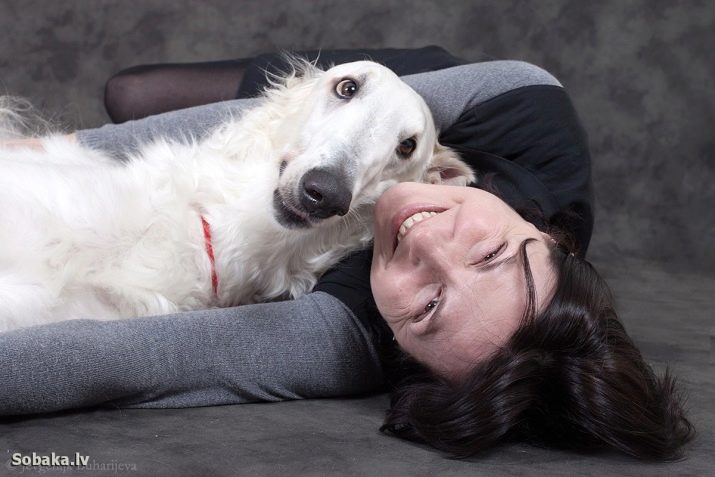
Outside of hunting and walking, the greyhound behaves passively, sits on the couch or lies quietly, sitting at the feet of the owner. Damaging wallpaper, gnawing on shoes or furniture is not in her aristocratic spirit. The psyche of a dog is vulnerable, therefore it suffers injustice rather painfully, and the punishment for it is a real tragedy.
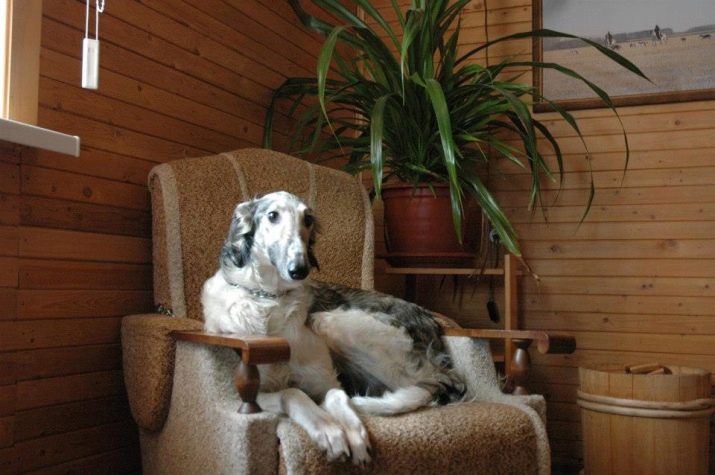
The instantaneous excitability of an animal requires special attention. A cat accidentally caught on a walk immediately turns into an object of hunting, because the main vocation of the breed is hunting for game. The instinct of persecution is developed at their maximum.
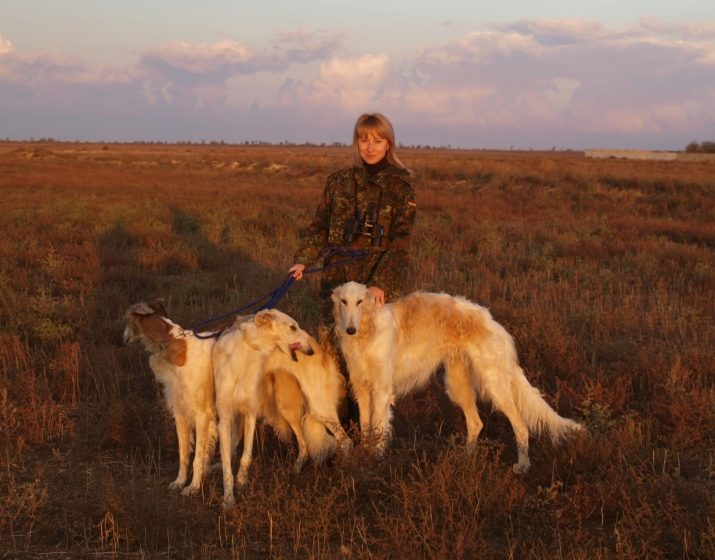
The intellectual parameters of the greyhound are well developed, but inexperienced owners often face difficulties in the educational process. This is because many people forget that this animal is far from being a companion or a service dog, and the style of upbringing should be completely different, since all the dog's intelligence is sharpened specifically for hunting.
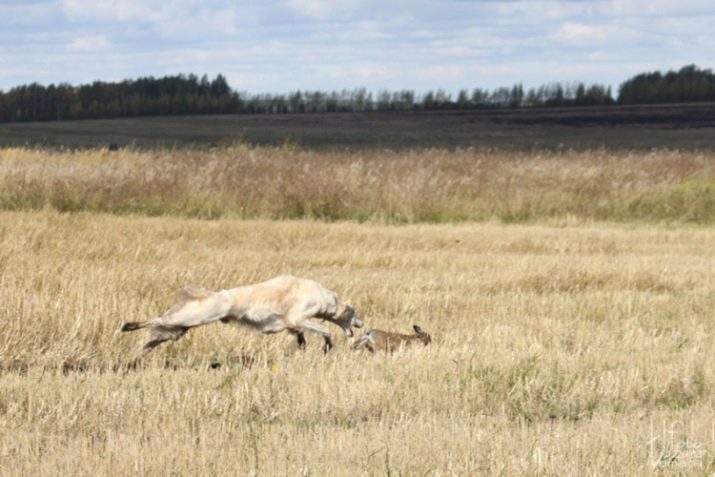
In everyday life, in accordance with a passive lifestyle, the impression is created that the canine intellect is resting with the dog.
Conditions for keeping
The lack of special requirements for space among Russian canine sighthounds allows them to be safely kept in an apartment (with frequent walks). It must be remembered that Dogs do not like ordinary beds, and they are unlikely to be satisfied with a modest corner in the hallway. They love to lie on the couch, bed or snuggle up in an armchair. It is in these conditions that dogs relax and rest their backs.

Some professionals even recommend a separate sofa with an orthopedic mattress for them.
It is recommended to keep yard greyhounds in an aviary equipped with an insulated booth. a height of at least 1 m and an area of approximately 1.5 m². For two individuals, the area of the booth must be at least 2.5 m².
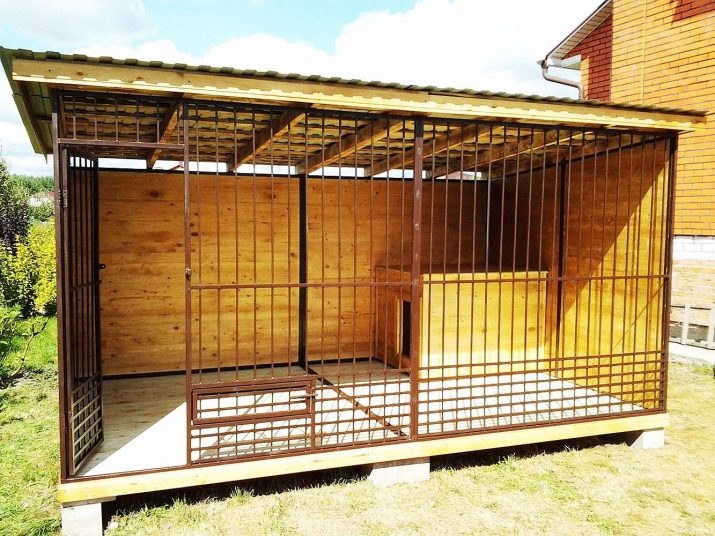
Russian greyhound puppies require special care.
Nutrition and care
Greyhound nutrition requires an attentive approach; pets are often very picky about food. Greyhounds require both a particularly balanced feed, as well as food of animal and plant nature.
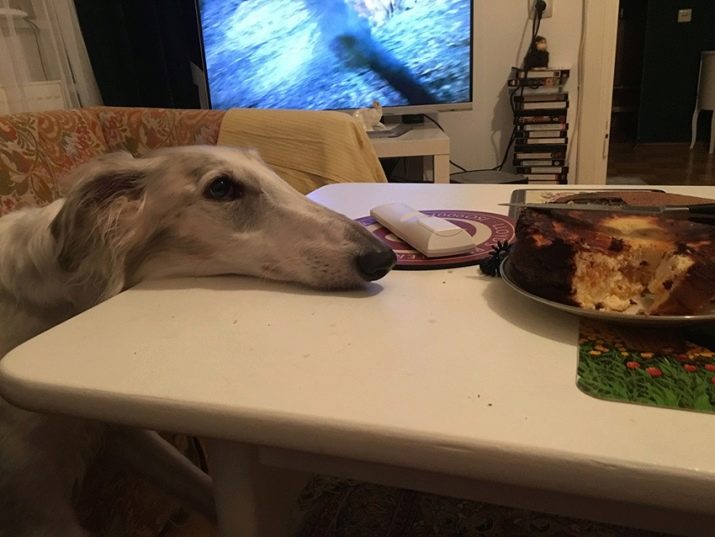
In greyhounds, intestinal obstruction occasionally occurs, which poses a serious threat to their body. For healthy digestion of the animal, and therefore well-being, the dog is fed repeatedly, in small portions. After eating physical activity is strictly prohibited for dogs, a little rest will be quite enough for the normal process of digestion.
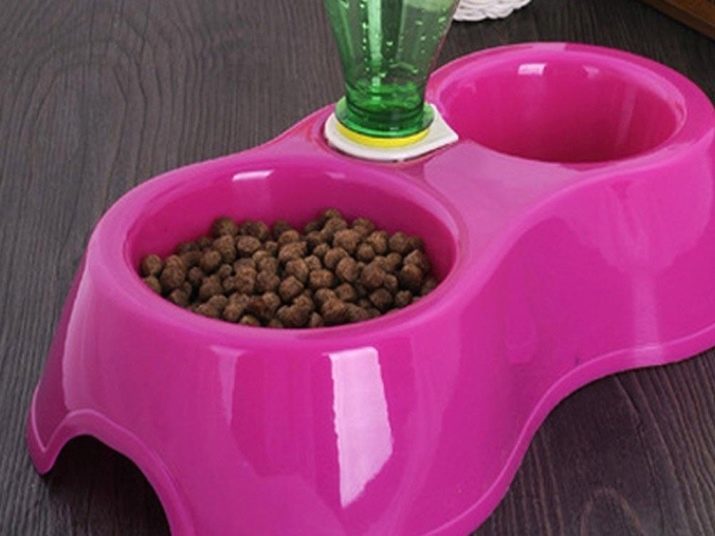
Compliance with several simple rules for feeding dogs is urgent:
- food should be freshly prepared, slightly warm;
- it is important to monitor the presence of fresh water in the dishes;
- the bowl should be kept clean at all times;
- It is not recommended to feed the dog before walking.


A number of foods that are prohibited for use in feeding dogs:
- fatty meats;
- smoked meats;
- hot spices;
- sweets;
- legumes;
- bakery;
- roast;
- river fish;
- tubular bones.
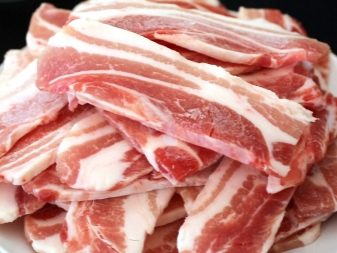
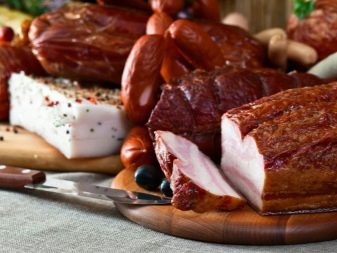

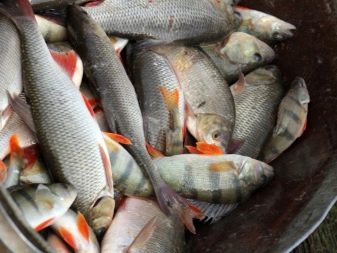
Useful for greyhounds:
- rabbit, chicken, cow, turkey meat;
- cereals in porridge;
- fermented milk products (kefir, low-fat cottage cheese);
- greens;
- vegetables (squash, carrots, pumpkin);
- fruits (apples);
- 1 teaspoon of vegetable oil per day.
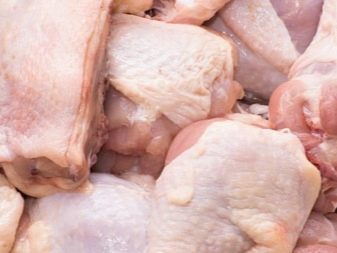
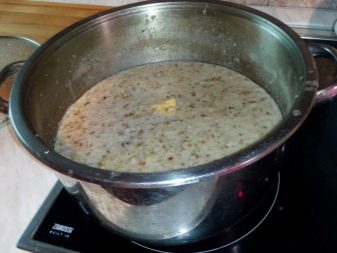


The process of caring for a greyhound does not require much effort. Its dog cleans itself, and after a walk in dry weather, shaking off is quite enough for the dog. Brush your greyhound 2-3 times a week using a brush. To simplify the process, the canopy is usually sprayed with conditioner. During molting, the dog is recommended comb every day: this quickly removes dying hair, and at the same time massage of the skin is performed.
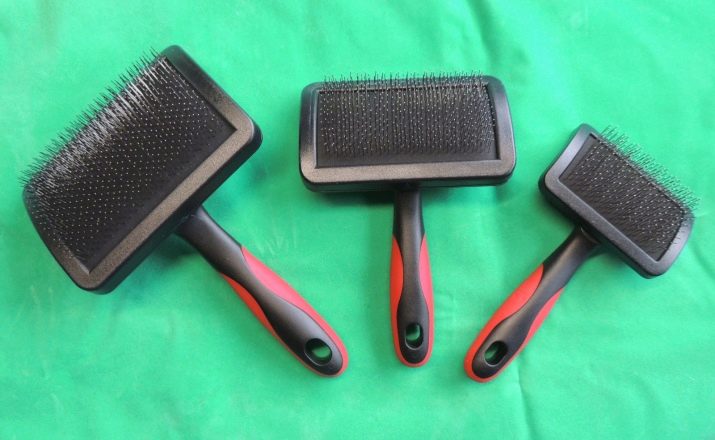
Different rules for petty dog grooming.
- They should be bathed as needed or once a month.
- Ears are cleaned once a week, with a cotton swab, previously moistened in warm water.
- The eyes are washed once weekly. Use a soft cloth dipped in a weak tea leaves or chamomile broth.
- The teeth are cleaned weekly, with a special paste, using a brush or a finger brush. To prevent dental calculus, the diet should contain fresh tomatoes.
- After walking, claws and paws are wiped with a damp cloth. In winter, it is necessary to monitor the condition of the pads on the paws, where cracks may appear. It would be useful to include vegetable oil in the diet, which is also used to wipe the pads.
- The claws are trimmed monthly using a nail clipper. If the dog moves a lot, then this procedure is performed less often. It is important to remember about the fifth, the so-called dewclaw on the forelegs. The finger is not long, it does not reach the ground, and therefore the claw does not wear off, you must constantly monitor its length.
- Every month, the dog's cover should be treated with a composition against fleas and ticks, which pose a real threat to the animal's body. Fleas cause an allergic reaction in greyhounds, and ticks carry piroplasmosis. The composition is applied to the cover with a greyhound, after application it cannot be bathed for 10 days.
- At the end of the walks, it is always necessary to examine the pet in order to identify parasites. For hunting dogs, this measure is extremely relevant. If a parasite is found, it is better to seek help from a veterinarian. In the following days, it will be useful to monitor the animal in order to control its activity, appetite and temperature.
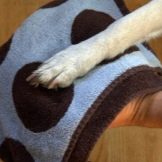


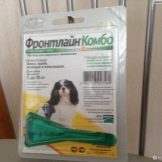
Typical diseases for Russian greyhounds are:
- intestinal obstruction;
- abnormal development of the joints;
- heart rhythm disturbances;
- cataract.
The greyhound is walked at least twice a day - in the morning and in the evening. In the morning within half an hour, in the evening - an hour and a half to enable the dog to run actively before bedtime. On weekends, it will be useful to go out into nature, giving the greyhound the opportunity to run up to 10 km, to tone the muscular system so that the animal does not fall into depression.

The bitch is able to feed no more than seven babies with high quality. If there are more of them, then from the 4th to 5th day you need to either feed them with milk using a pacifier, or decide on a wet nurse. The mother feeds the puppies for 1-1.5 months. It is not worth taking all the puppies from the bitch right away - her milk should be gradually reduced.
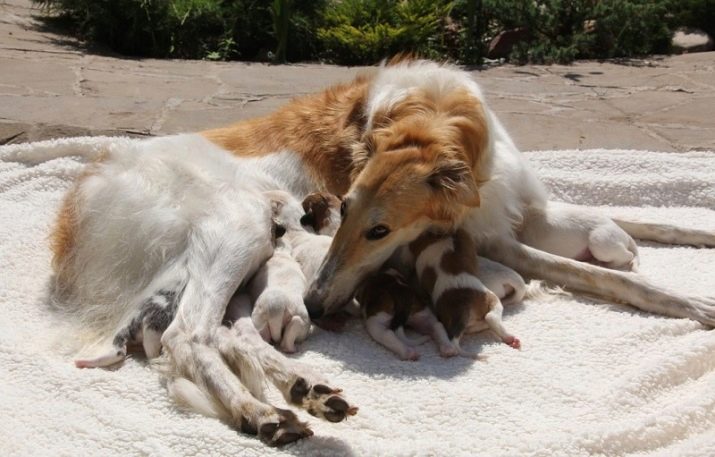
On the day of 2-month-old babies are fed 6 times, 3–4 months old - 5, 4–6 months old - 4, older ones - 3, one-year-olds - 2 times.
An excellent food for 3-month-old babies will be a mixture of whole milk with bread, oatmeal, and minced meat. A little later, they begin to give ground oats, steamed in boiling water and diluted with milk. It is better to give meat boiled, raw - only checked. Various dairy products are useful (curd products and sour milk).
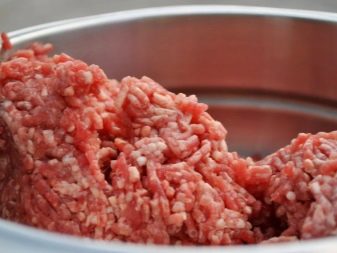
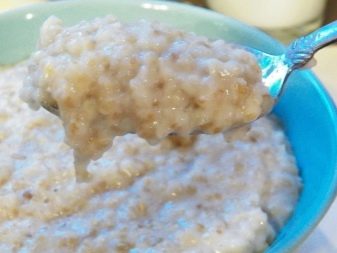
The growth of babies is completed by about a year, then they gradually become pregnant. Greyhound needs vitamins, which are rich in grated carrots and other vegetables, both raw and boiled. In a small amount, children and mature dogs need salt. Fish oil supplemented with vitamins is useful for puppies.
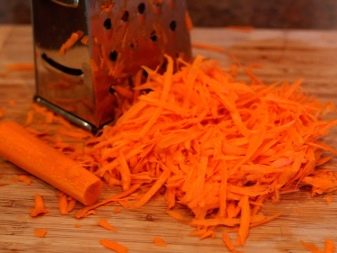
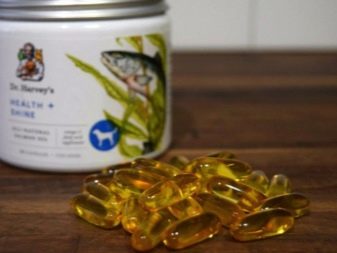
Education and training
The main purpose of greyhounds is hunting for dogs. This introduces a number of features into the upbringing, training and behavioral aspects of greyhounds that are important to be aware of and take into account in daily work with them. Hound hunting dogs should be less dependent on the direct commands of the owner than, for example, service breeds. The main qualities of canine sighthounds are quick wits, the ability to make decisions on their own, complete dedication in the process of hunting.
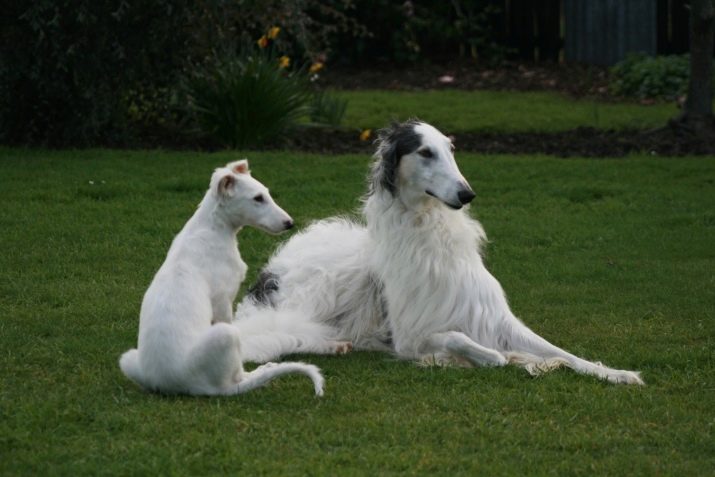
Greyhounds completely lack any servility or servility towards the owner. In the course of selection, the breed was carefully instilled with a willingness to hunt and hunting excitement.
Every year, the dog should be actively trained and educated. Otherwise, she will get bored and begin to lose all her "fighting" qualities. It is recommended to take two puppies for training so that they move actively and acquire speed qualities. The regularity and intensity of training is the key to the success and excellent well-being of animals. Babies should not be given significant loads.
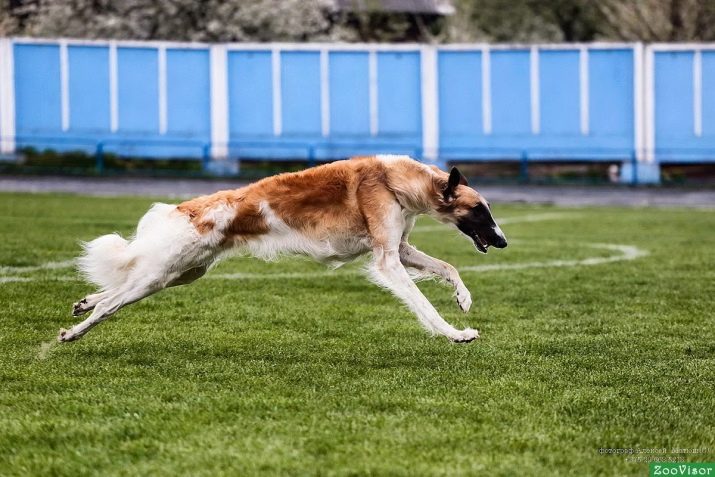
At 5 months, they may well stubbornly ignore commands, showing excessive independence. Patience is the key to overcoming all difficulties in greyhound training.
Greyhounds should be trained from a very early age. Considering the love of freedom and the desire for independence inherent in the breed, one should not expect from them unquestioning execution of commands by analogy with the service breeds. However, the greyhound must have basic commands and skills that clearly indicate what is allowed and what is not.
Calmness and even a certain apathy of greyhounds in everyday life is deceiving. In conditions of hunting, dogs instantly rebuild so that it is difficult to recognize in them a phlegmatic and unhurried individual who obediently brings the owner a newspaper for breakfast.

In the old days, greyhounds were used to hunt wolves, because a greyhound could hunt down such a strong predator alone, and they were always accustomed to pursuing their prey to the last. That's why training should be aimed either at instilling hunting skills, or at show behavior.
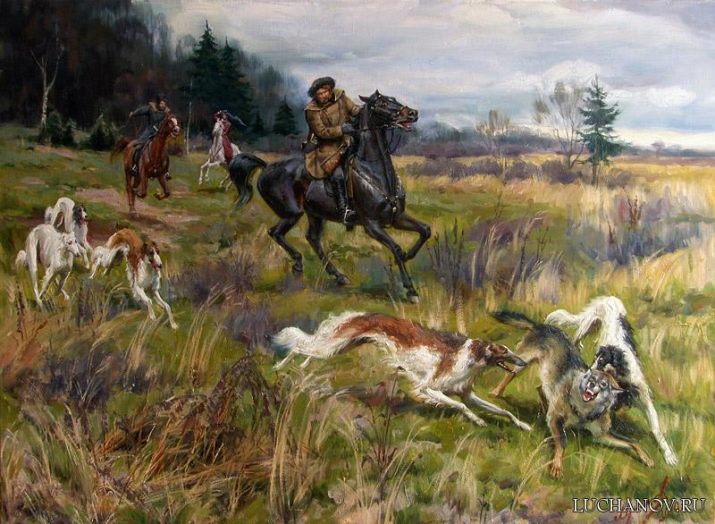
Using a dog as a watchman or guard is impractical.
The basis and purpose of raising a puppy is to train him at a young age to distinguish everyday life from play and hunting. The dog should not rush at everything that moves during the walk - here it is necessary to emphasize the command "near", the execution of which should be accompanied by stimulation with feeding (an edible bonus).
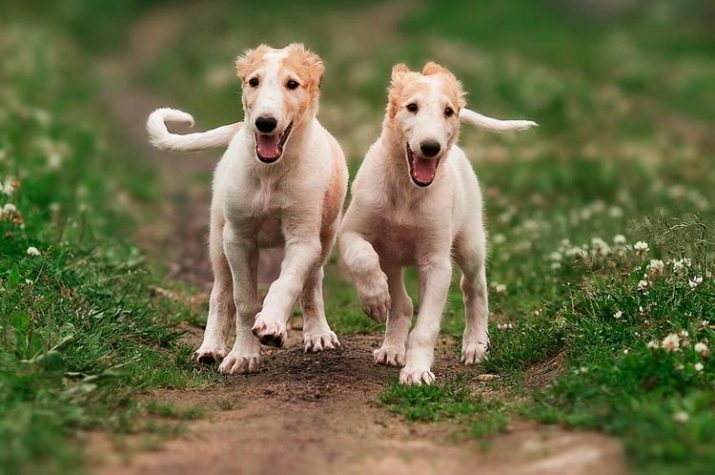
If a young dog is unreasonably active in reacting to people, animals, or moving objects, the old otrysh breeder team should be used. Even a puppy will be able to quickly master this command, thanks to genetic memory. Greyhounds can learn and perform many complex tricks, and they often participate in circus performances. Greyhounds are excellently trained animals that successfully perform in obedience and agility.
However, the independence and stubbornness characteristic of dogs involves the use of a significant amount of bonuses in training, as well as a gentle and patient approach. Dogs are very sensitive to shouts and become nervous. Rough methods of upbringing and training of the Russian canine sighthound are strictly prohibited.
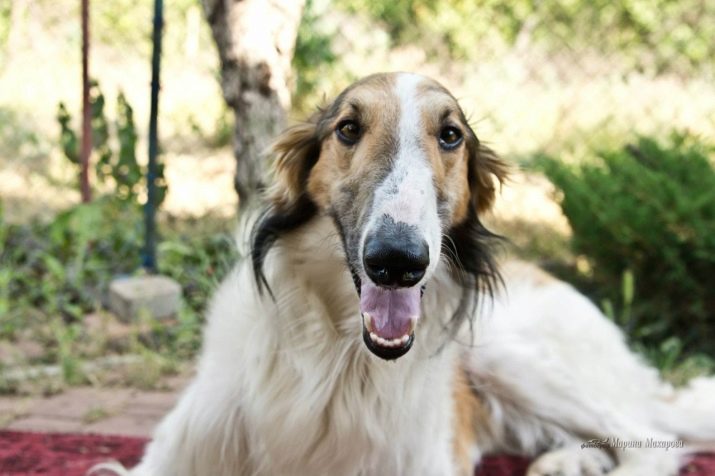
For the characteristics of this breed of dog, see below.






































